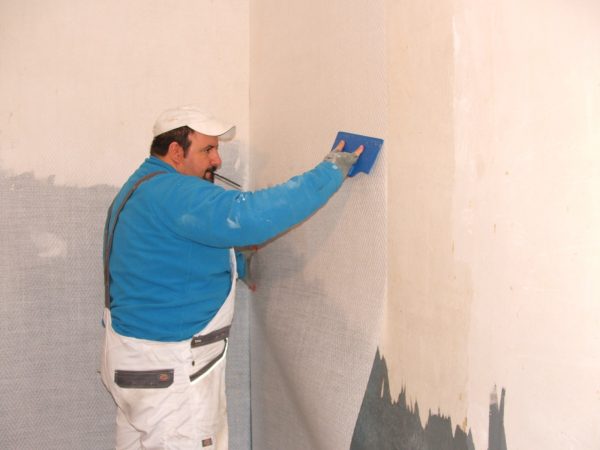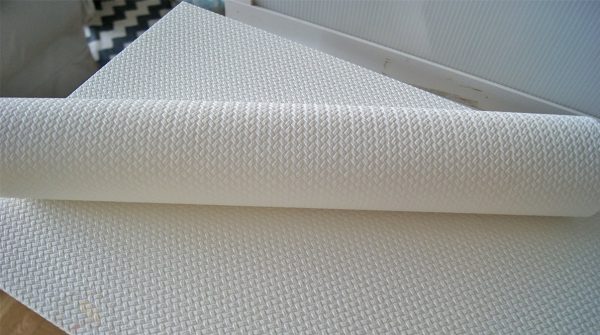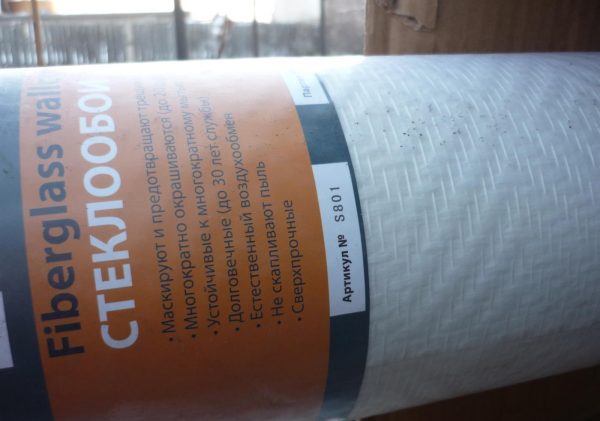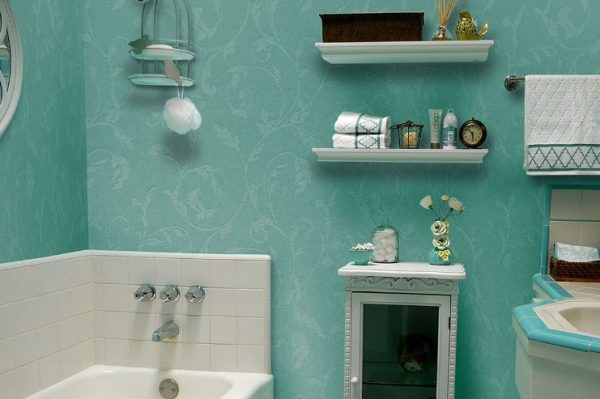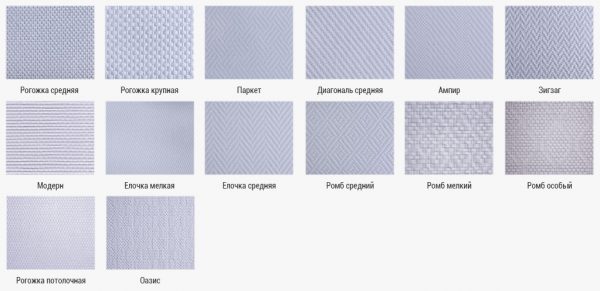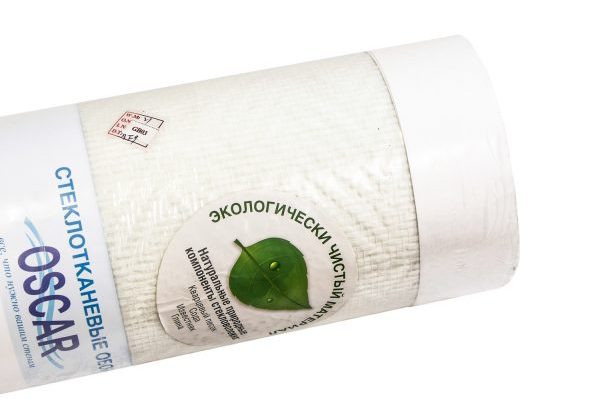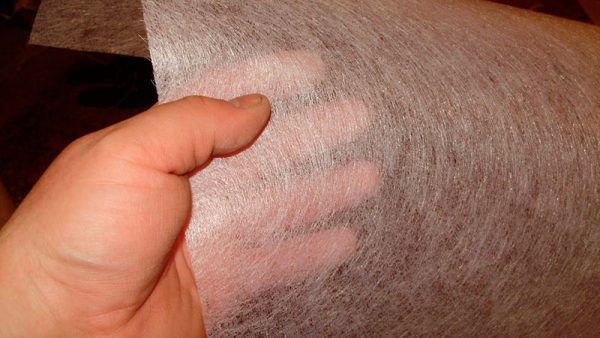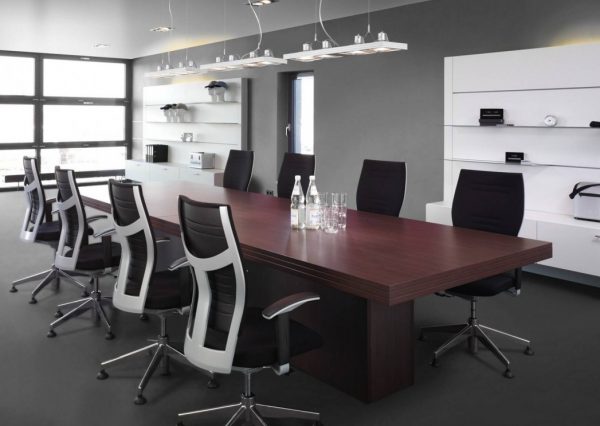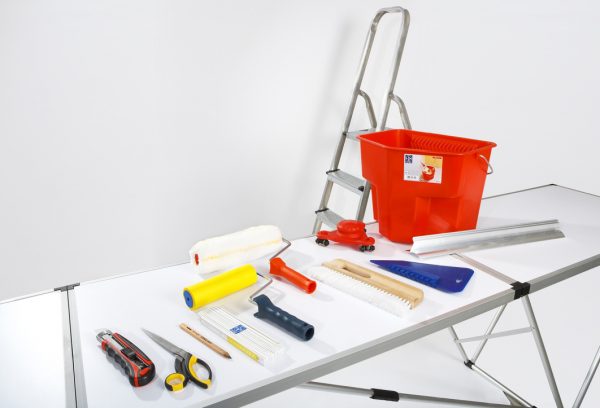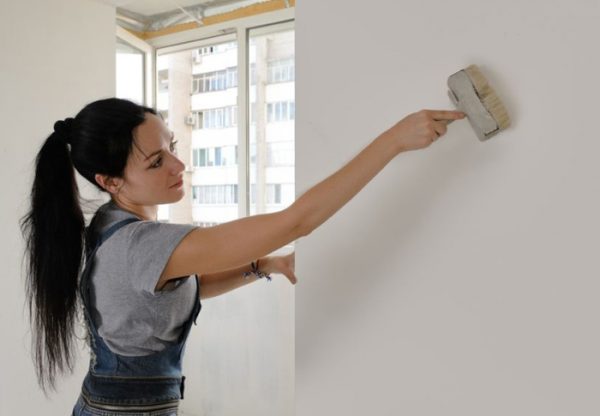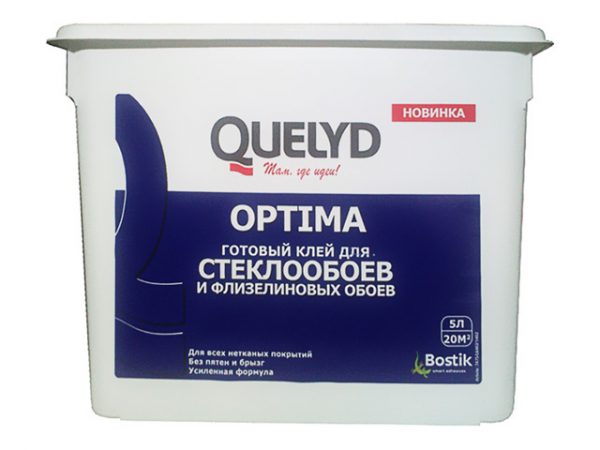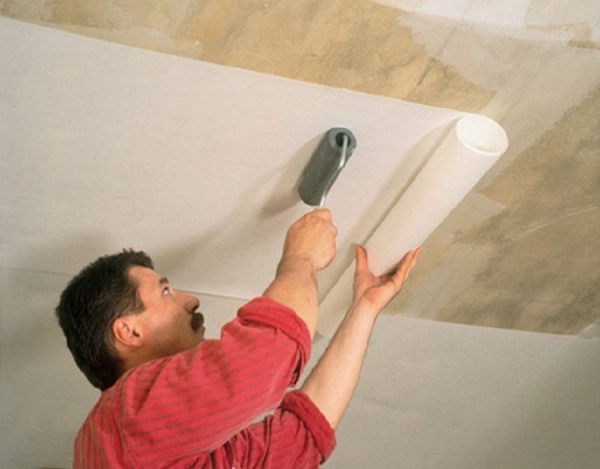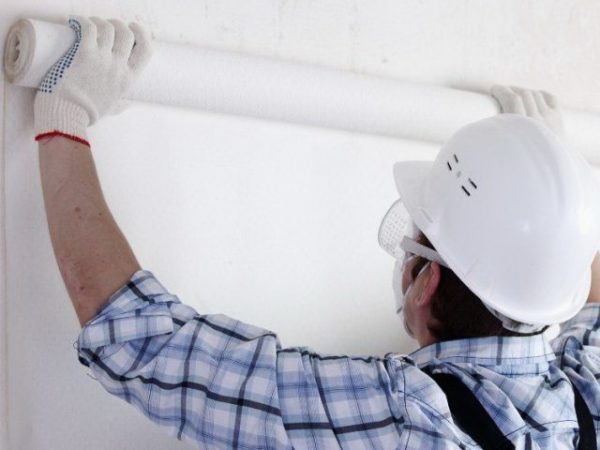Wall painting is a popular decoration method. But many are frightened by the fact that preparing the surface for finishing work is very difficult, because the paint will emphasize the slightest unevenness of the base. The technique of pasting walls and ceilings with special types of wallpaper for painting comes to the rescue. After that you can give the surface any color - you just need to paint the wall, while all the flaws will be hidden.
- Cullet - what is it
- Material properties
- Advantages and disadvantages of cullet
- Glass selection
- Material texture
- The degree of decoration of glass
- Type of glass weaving
- The purpose of glass
- Glass Wallpapering Technology
- Instruments
- Surface preparation
- Selection and preparation of glue
- Pasting surfaces with glass
- Bonding material in corners
- Finish finish
- Tips & Tricks
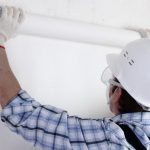
An excellent option for decorating any room will be cullets - a unique material widely used in repairs. Before gluing cullets, you need to choose a good glue and make a number of preparatory measures.
to contents ↑Cullet - what is it
Cullets are wallpaper used for painting, which is based on fiberglass. The composition of the material: dolomite, limestone, quartz sand and other additives from which "yarn" is prepared under the influence of high temperatures. By melting at +1200 degrees, mineral substances turn into a liquid mass, from which thin filaments, like glass, are isolated. Then a glass-breaking web is made of them, allowed to create a reinforcing fiberglass. At the end of the process, the cullet is impregnated with modified starch.
Attention! Cullets are sold in rolls with a width of 1-1.05 m (narrower sheets are almost never found on sale), the length of the roll is 12.5-50 m. Cost sq.m. varies greatly depending on the size of the roll, manufacturer, texture, quality of the material.
A certain pattern on the wallpaper is created through the use of fibers of different thicknesses in the production process. Typically, the drawings give a roughness, but not too embossed, although a larger decor gives the impression of volume.
to contents ↑Material properties
There are plenty of positive qualities for this type of wallpaper. They are incredibly durable, do not tear, do not deteriorate even when scratched, because the service life exceeds 30 years. Most brands of fiberglass can withstand up to 15-20 repaints.
The main technical characteristics of the wallpaper:
- density indicator - 125-220 grams per 1 m2;
- weight sq.m. canvas - from 50 g;
- whiteness - from 70%;
- high fire safety (combustibility class - G1, flammability - B1, smoke production - D1, toxicity of combustion products - T1);
- lack of accumulation of static electricity;
- reinforcing properties - strengthening the wall structure, the previous finish.
Before going on sale, the bottom side of the wallpaper is marked. This is necessary so that the question does not arise: which side this material is glued to. The edge of the wallpaper is perfectly even, the pattern fits perfectly when glued.
to contents ↑Advantages and disadvantages of cullet
The material is environmentally friendly, because phenol formaldehyde and other harmful substances are not used in the manufacture.High reliability, serious reinforcement of the walls, prevention of the appearance of defects are the indisputable advantages of the material. Wallpaper can not be scratched, even from the claws of animals there is no trace left on them.
Cullets do not deform during shrinkage, since they hardly change shape after the glue dries. It is possible to use the material even in new buildings - it will “adjust” itself when the base shrinks.
Other advantages of the material:
- Complete fire safety. This wallpaper is not so combustible that it is used for gluing fire escape routes, coupled with special paint. They are used even in houses with stove heating near pipes, stoves - the material is completely not prone to ignition.
- The ability to align the walls. If you stick the wallpaper, then small differences, irregularities, defects will disappear even without careful alignment and puttying.
- Use in damp rooms. Sticking glass is acceptable even in the bathroom, in the kitchen - they are not afraid of direct moisture, humidity drops, do not respond to sudden changes in temperature.
- Vapor permeability. Wallpaper does not violate the natural microclimate of the room, help maintain parameters at the proper level.
- Excellent hygiene characteristics. The material does not accumulate dust, remains dry and does not cause the growth of fungus, mold, it is resistant to dirt and chemicals, it can be washed with any means.
- Lack of response to ultraviolet. Cullets do not fade when exposed to sunlight. But for a long time to maintain an attractive appearance, you need to purchase the appropriate paint with high resistance to UV radiation.
- Hypoallergenicity. Even allergy sufferers can glue the room with such material - reactions will not occur, because the wallpaper does not contain allergy sources.
The material also has disadvantages. The expense for 1 m² in cash is quite high compared to other types of wallpaper. Due to the high cost of work, many refuse to purchase. Other disadvantages of cullet:
- Difficulties with the purchase of paintwork. You can paint the material only with certain types of paints: acrylic, latex, those that have the desired structure. Other materials do not fit well and drown the pattern.
- Dear glue. The usual cheap tool for such wallpapers is not suitable. You will have to buy a special thick adhesive for cullet that can hold heavy canvases. The repair cost calculator here also needs to be applied in advance, because the amount spent will seriously increase.
- Difficulties with the removal of paintings. If you decide to remove the glass, you have to work hard. Due to the starch impregnation, they are very firmly connected to the glue and the wall.
- A modest assortment. There are few types of cullets (in comparison with ordinary ones), although after gluing them you can paint them, apply different design techniques.
You will have to work with the material in protective clothing - when gluing the walls, the wallpaper is prickling, because they contain glass particles. For the same reason, it is important to use a respirator when working, otherwise there is a risk of respiratory tract irritation. In general, it is recommended to buy cullet when it is necessary to finish for a very long time with the ability to regularly change color.
to contents ↑Glass selection
Cullets are selected depending on the pattern - they can be smooth or embossed. A number of manufacturers fluff up fiberglass threads to make the decor of the wallpaper look clearer. Nevertheless, when impregnated with glue, the fibers lie denser, and the pattern still looks flat compared to vinyl.
Worth to know! Product quality is assessed by density directly in the roll. But unscrupulous firms can overwhelm the canvas too much with starch to make it denser. After sticking, the impregnation gets wet, the material becomes loose.
It is better not to take goods from an unknown manufacturer, giving preference to proven brands, carefully read the technical specifications stated on the roll. It is worth acquiring cullet with a density of 145 g / sq.m. If the density is not indicated, it is necessary to focus on the weight of the roll.The heavier it is, the greater the density and better quality of the wallpaper, although the length of the canvas and the risk of excessive impregnation should also be taken into account.
The following foreign brands make quality wallpapers:
- Vitrulan;
- Oscar;
- Wellton
- Nortex.
Material texture
To pick up beautiful wallpaper on the walls for painting, you need to pay attention to their texture. All cullets can be divided into the following types:
- Smooth. Their other names: fiberglass, fiberglass. They are even, monophonic, have medium or low density. Professionals call such materials a "spider web." More often, wallpapers serve as ceiling coverings, although they can also be glued to walls to give evenness.
- Embossed. They have a high density and a certain pattern. It is impossible to tear them apart with your hands. Such material is made on a special loom, and wallpaper with complex decor on jacquard looms.
The degree of decoration of glass
Cullets are also classified according to the degree of decoration. They are divided into 2 groups:
- Colored wallpaper. On sale are rare. Fully ready for use, plain or patterned.
- Material for painting. Needs additional decoration with water-based paints.
Fiberglass make putty fiberglass - it is used for technical alignment of problem areas. There are even liquid cullets, where the main filler is multicolored fiberglass.
to contents ↑Type of glass weaving
Most often on sale there are 4 types of cullet:
- cobweb - used for painting, but more often for leveling walls, stickers on the ceiling;
- herringbone - the drawing resembles a Christmas tree, it looks quite simple;
- gunny - a beautiful version of the decor, very durable;
- diamonds - a large beautiful decor, often used in offices.
The purpose of glass
By application, wallpaper can be divided into ceiling (mostly smooth), wall (embossed), there are universal options that are even suitable for gluing on a furnace, escape routes, various designs. Cullets are widely used in such places:
- houses, apartments;
- catering establishments;
- offices, commercial institutions;
- polyclinics, hospitals;
- shops, shopping centers;
- hairdressing salons.
In apartments, it is recommended to use material for kitchens, corridors - where the walls are most dirty. In the bathroom, they can become an alternative to tiles due to wear resistance, water-repellent qualities.
to contents ↑Glass Wallpapering Technology
To properly stick the wallpaper, you need to strictly follow the technology. Tips will help even a novice cope with the task.
Instruments
To finish the walls, ceiling, you need wallpaper itself (the calculation of the amount must be done in advance), glue, a stepladder or stool. You also need to prepare:
- wallpaper spatula;
- drill with a nozzle for stirring glue;
- water, a bucket;
- rags are clean;
- roller or brush;
- knife or scissors;
- pencil and tape measure, level.
Surface preparation
Walls, ceiling need proper preparation. On the basis there should not be serious pits, potholes, ledges. The old coating should be removed, as well as dust, dirt. Broken wallpaper is wetted with water using a roller, or spray water. Then remove the wallpaper using a metal spatula. The walls painted with a water-based emulsion are simply washed with a rag, sponge. Oil paint will have to be removed mechanically - with an emery cloth, a scraper, faster this is obtained with a drill with a metal brush. It is also permissible to use a special wash for oil paints.
If the wall already has old cullets, you can not even remove them. Only the places of swelling should be punctured with a needle, insert glue inside, align and glue the canvas. Then, a layer of finishing putty, a primer is applied to the cullet, then new material is glued.
Fiberglass is glued onto drywall after obligatory puttying of joints and gluing them with reinforcing tape. Then the joints are treated with sandpaper, dust is removed, the entire GKL sheet is primed. 2-3 layers of putty are applied to concrete, brick until the wall becomes even.Primers are required for use before finishing with cullet. On sale there are universal options and special primers for different types of substrates. PVA glue diluted 1:10 with water is also suitable, which is applied with a roller. Wallpapering begins only after the primer has completely dried.
to contents ↑Selection and preparation of glue
Almost every manufacturing company produces a special type of glue for glass. Oscar glue with pigment, for example, that helps uniformly smear the fabric, is well suited. For country houses, other cold rooms frost-resistant adhesives are suitable - Kleo, Pufas.
Important! You can not use ordinary glue for paper wallpaper - it is too weak and will not hold a heavy canvas. Some expensive cullets are already saturated with glue from the inside, they just need to be moistened with water.
For proper breeding, you need to carefully read the instructions. After measuring the specified volume of water, it is poured into the dishes, glue is gradually added, knead manually or with a drill with a nozzle. The product is stirred for a long time so that there are no lumps left. After 8 minutes, when the glue swells, it can be used. By consistency, it should look like a thick jelly.
to contents ↑Pasting surfaces with glass
Wallpaper is glued in the same way as their other types. The finished adhesive is applied to the canvas or to the wall (as indicated by a specific manufacturer). Do it better with a roller, paint over the corners with a brush. It is important to distribute the mass evenly, otherwise the material will not stick or will be too saturated with glue. The canvas is cut with a margin for the bottom of 5-10 cm.
Tips for work:
- the first canvas is glued strictly vertically, which is checked by the level;
- Wallpaper is smoothed from the center to the edges to remove air using a plastic spatula;
- excess length is removed with a clerical knife or scissors;
- the second sheet is glued butt, the edges are applied so that the pattern matches;
- the surface is also ironed by hand, then with a spatula.
In the area of sockets, switches, the material should be glued with the electricity turned off. The outer boxes are removed, glued on the wall, cutting the canvas crosswise. Surplus at the outlet immediately cut off with a knife. When working with wallpaper in the room there should be no drafts, the windows should be protected from direct sunlight.
to contents ↑Bonding material in corners
The outer corner can be performed by this method. Glue the piece so that the edge protrudes 10 cm, apply the adhesive composition to the second side. Wrap the canvas, press it to the corner. Glue the second strip with an overlap with the combination of the pattern. After using a sharp spatula, cut the joint at both canvases at a small distance from the corner. Remove both strips above and below. Grease the joint with glue, connect the material.
to contents ↑The internal angle is as follows. The last canvas is planted on the next wall by 2 cm. Too wide material is cut. Next, the strip is imposed with an overlap. Get a double layer, but when painting it will be invisible.
Finish finish
After pasting the walls, the ceiling, you need to wait until it completely dries. Next, proceed to the final finish. A suitable paint based on acrylic, latex is purchased. You can decorate the wallpaper with the following methods:
- With a border. In the center it is permissible to glue the border. In this case, it is necessary to cut a strip in the right place along the width of the border in the wet material. Next, the surface of the cullet needs to be painted (you can use a different color from the top and bottom), glue the border.
- With a stencil. Smooth wallpapers are usually decorated with drawings, patterns. Masking tape is used to glue stencils on already painted material, paint over the opening of the stencil with spray paint.
- Rakelny coloring. After applying bright paint, glaze with decorative varnish with a touch of metallic with a roller. After drying, the varnish passes with a wet sponge, removing the top layer.
- With azure. Instead of varnish, white, colored azure is used, it is applied with a brush. After 20 minutes, the product is leveled with a rubber spatula.
to contents ↑
Tips & Tricks
After completing the gluing and painting of glass in the room, it is important to conduct a thorough wet cleaning.This will eliminate small particles of fiberglass that have settled on the floor. 48 hours after wallpapering, you can ventilate the room well. In the future, it is recommended to regularly wipe the material, wash it - it does not require caution during operation and lasts quite a long time without complaints.

